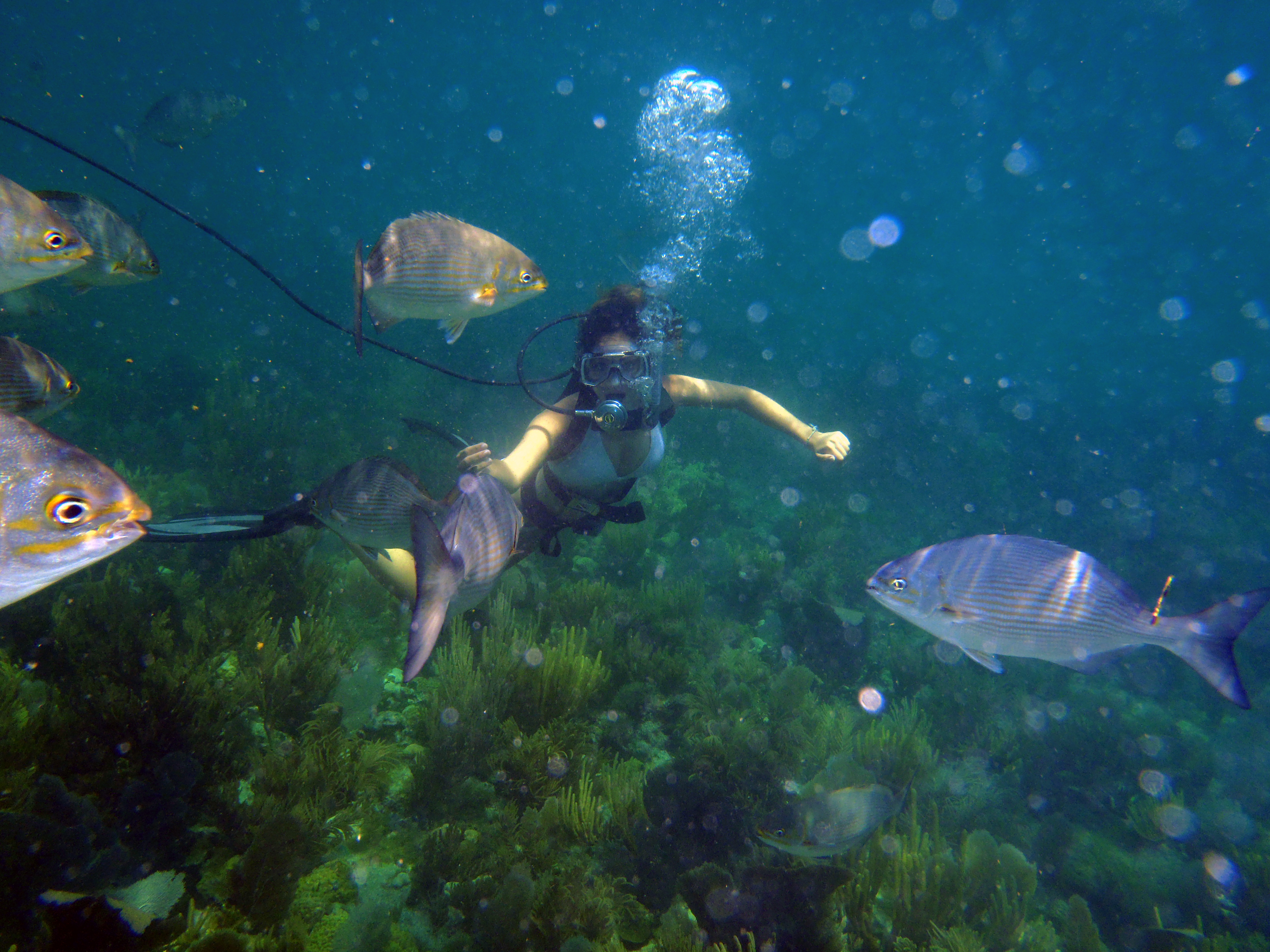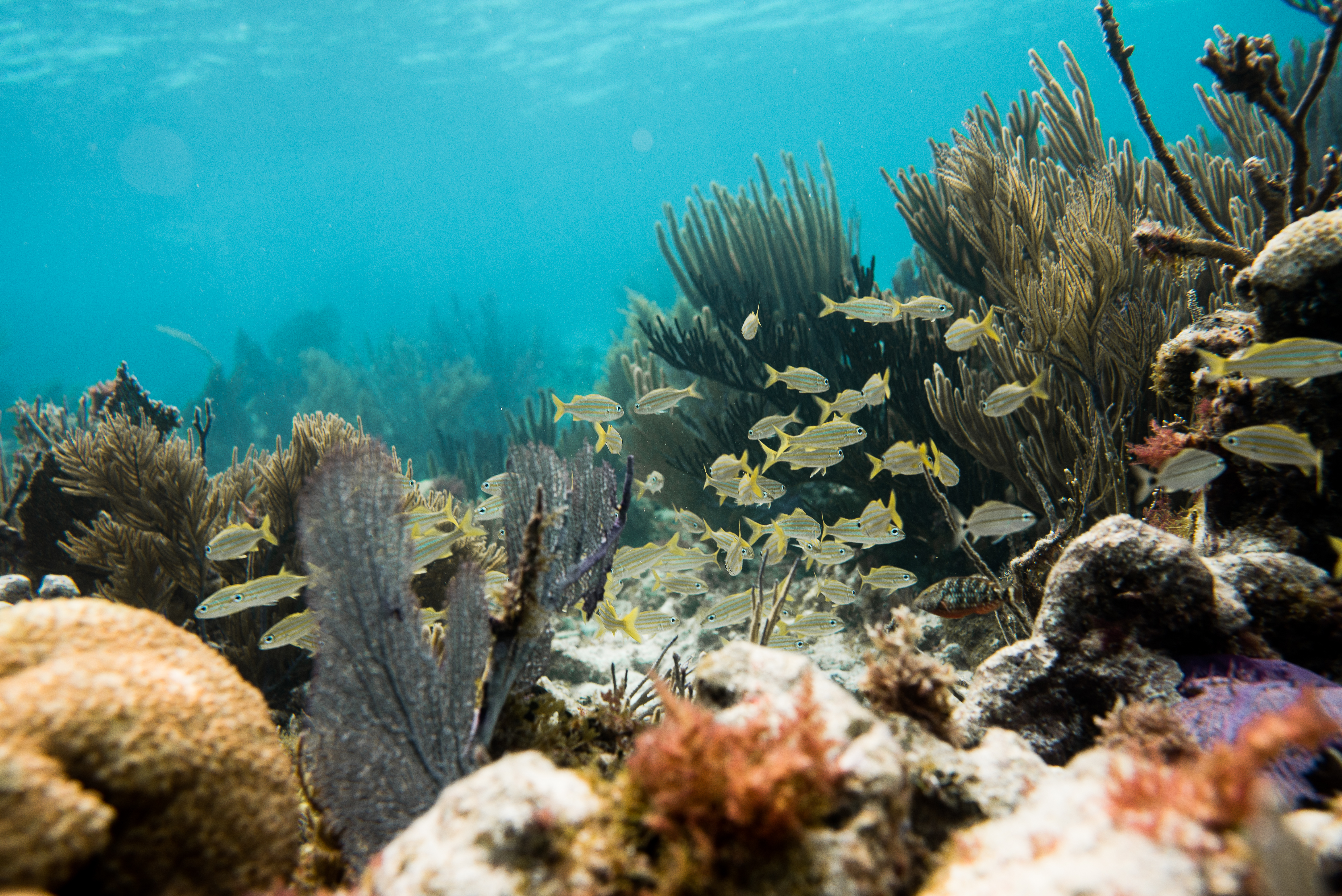While snorkeling at the coral reefs is popular, two habitats are often overlooked. John Pennekamp Coral Reef State Park has both mangrove and seagrass areas, a vital part of the Florida Keys ecosystem. They are valuable habitats to many species, filter excess nutrients from the water, and stabilize sediments holding creeks and shorelines together in the face of storms.

Seagrass and mangrove areas tend to be shallow and often sheltered, making them ideal snorkel destinations on windy days, or for beginning snorkelers. Make the most of your snorkel: swim slowly and quietly and don’t stir up the bottom (keep those fins at the surface!). Find a place to stop for a moment and float silently. If you look closely you may see small juvenile fish darting between mangrove roots and skimming along the grass blades; maybe even a pipefish or seahorse. Along sandy areas or the edges of the mangroves, look for orange sea stars, green lettuce sea slugs and white fringe-backed nudibranchs. Clinging to the roots are multicolored sponges, mangrove oysters, tunicates and many species of algae. You might also see various crabs, shrimp and juvenile lobsters. Occasional encounters with larger animals such as manatees, sea turtles, dolphins or tarpon are possible. Remember to keep a respectful distance from any wildlife, both for your safety and for theirs.

Please remember that these areas are protected; take only pictures and leave only bubbles! Always display a dive flag while snorkeling and be especially careful when boating in shallow waters. You’ll love this adventure in the Real Florida!
